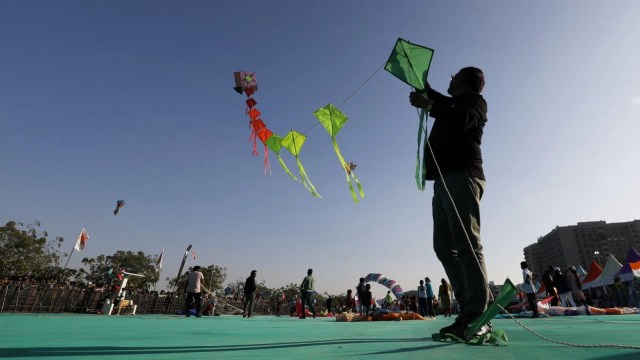📣 For more lifestyle news, click here to join our WhatsApp Channel and also follow us on Instagram
From humans to birds and animals, how the Chinese manja used to fly kites on Makar Sankranti can cause fatal injuries
Kite flying, an age-old tradition marking this harvest festival, has unfortunately been marred by the rampant use of synthetic, glass-coated “Chinese manja.”
 Discover the hidden dangers of Chinese manja this Makar Sankranti. Learn how its use harms birds, humans, and the environment, and find eco-friendly alternatives to celebrate responsibly. (file)
Discover the hidden dangers of Chinese manja this Makar Sankranti. Learn how its use harms birds, humans, and the environment, and find eco-friendly alternatives to celebrate responsibly. (file)As the skies across India prepare to fill with colourful kites this Makar Sankranti, it’s easy to overlook the hidden dangers lurking in the threads holding them aloft.
Kite flying, an age-old tradition marking this harvest festival, has unfortunately been marred by the rampant use of synthetic, glass-coated “Chinese manja.” While its sharpness ensures competitive kite flying, it leaves behind a trail of destruction—injured birds, maimed humans, and irreversible environmental damage.
Despite being banned by the National Green Tribunal in 2017, Chinese manja continues to be sold clandestinely. Under Section 223 of the Bharatiya Nyay Sanhita 2023, its use is punishable with fines of INR 5,000 or imprisonment for up to one year. But laws alone cannot safeguard lives—it’s upon us to act responsibly. But first, let’s understand how it is harmful.
 The environmental impact of Chinese manja is equally alarming (Express Photo by Praveen Khanna)
The environmental impact of Chinese manja is equally alarming (Express Photo by Praveen Khanna)
Why is Chinese manja harmful?
Deadly for Birds and Animals
Every year, thousands of birds bear the brunt of Chinese manja. Sharp, non-biodegradable, and coated with crushed glass, it causes fatal injuries to birds mid-flight. As per Ahmedabad’s Jivdaya Charitable Trust, 4,000 birds were injured in the city during the 2024 festival alone.
Dangerous to Humans
The threat isn’t limited to animals. Glass-coated threads have caused severe injuries and even fatalities among humans. Earlier this week, a Meerut man lost his life after being cut by a manja. Motorcyclists, unaware of low-hanging kite strings, often sustain life-threatening cuts.
Environmental Threats
The environmental impact of Chinese manja is equally alarming. As it is non-biodegradable, discarded strings linger for years, clogging drains, polluting water bodies, and posing a persistent risk to terrestrial and marine wildlife.
What can you do?
- Switch to eco-friendly alternatives: Traditional cotton threads are a safer, biodegradable option that aligns with festival spirit.
- Report illegal vendors: Inform authorities about any ongoing sale of Chinese manja.
- Rescue and report injuries: Keep a list of local bird helplines handy and act quickly to help injured animals.
- Dispose responsibly: Avoid littering kite strings and materials in public spaces or water bodies.
This year, let’s celebrate Makar Sankranti by looking beyond mere tradition and embracing empathy.
📣 For more lifestyle news, click here to join our WhatsApp Channel and also follow us on Instagram





- 01
- 02
- 03
- 04
- 05






















